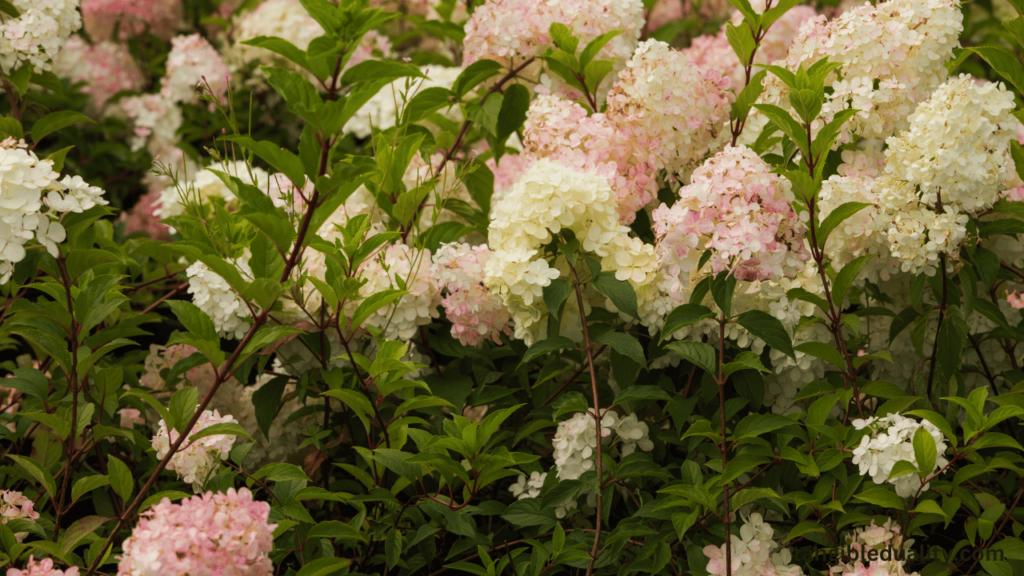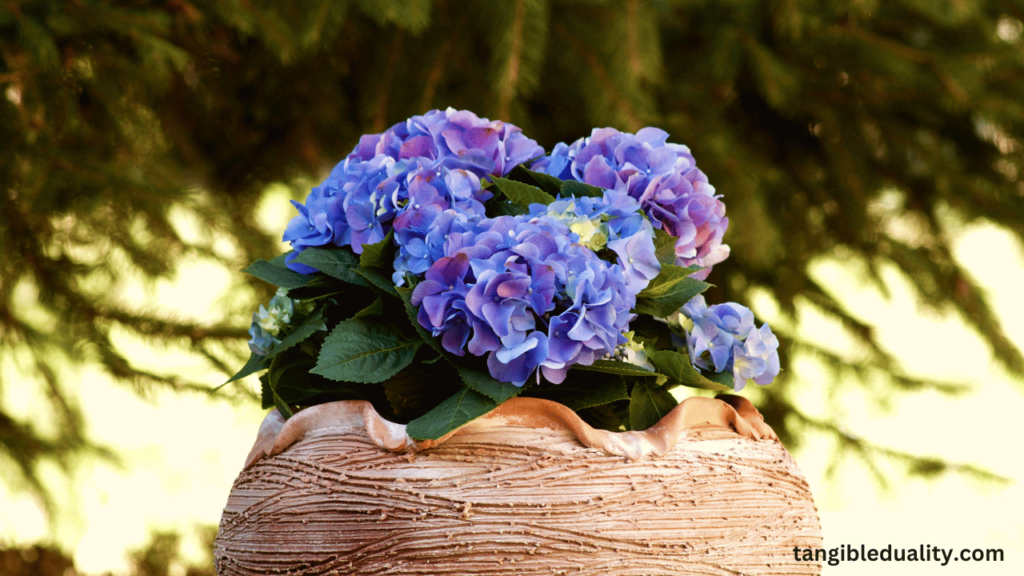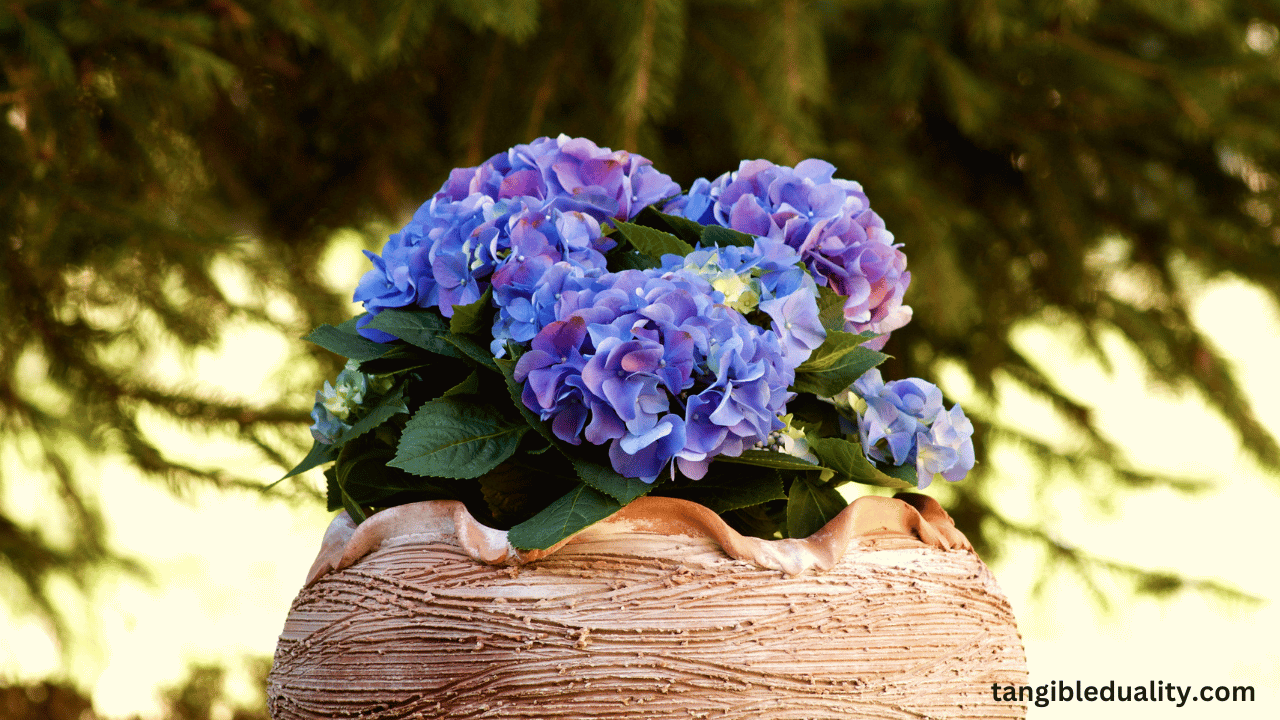Hydrangeas, with their stunning blooms and varied colors, are cherished by gardeners for their beauty and versatility. While they are commonly planted directly in the ground, many gardeners opt to grow hydrangeas in pots, either for convenience, space constraints, or aesthetic reasons.
However, as winter approaches, concerns arise about the well-being of potted hydrangeas. Can they withstand the cold temperatures and harsh conditions of winter while confined to containers?
In this comprehensive guide, we will delve into the factors influencing the overwintering success of potted hydrangeas and explore effective winter care strategies.

Understanding Hydrangeas
Before discussing winter care, it’s crucial to have a basic understanding of hydrangeas and their requirements. Hydrangeas belong to the Hydrangeaceae family and encompass various species and cultivars, each with its unique characteristics and growing preferences.
These flowering shrubs thrive in well-drained soil that is rich in organic matter and prefer partial shade, though some varieties can tolerate full sun with adequate moisture. Understanding the specific needs of your hydrangea cultivar is essential for providing optimal care throughout the year.
Factors to Consider
Several key factors influence the ability of potted hydrangeas to survive the winter months:
Climate
The climate of your region is perhaps the most critical factor to consider when determining whether to leave hydrangeas in pots during the winter. Regions with mild winters may allow for overwintering outdoors, while colder climates may necessitate additional protection or indoor shelter.
Hydrangea Variety
Different hydrangea species and cultivars exhibit varying degrees of cold hardiness. For example, Hydrangea macrophylla varieties, including mophead and lacecap hydrangeas, are generally less cold-tolerant and may require extra care in more frigid climates compared to Hydrangea paniculata or Hydrangea arborescens varieties.
Container Size and Material
The size and material of the pot can significantly impact the winter survival of potted hydrangeas. Larger pots provide more insulation and stability, while containers made of materials such as terracotta may be prone to cracking in freezing temperatures. Additionally, plastic or fiberglass pots may offer better insulation than clay or metal containers.
Microclimate
The microclimate of your garden or patio can influence the temperature and exposure levels experienced by your potted hydrangea. Placing the container near a south-facing wall or in a sheltered area can provide additional protection from cold winds and frost.
Soil Moisture and Drainage
Proper soil moisture management is crucial for the health of potted hydrangeas during winter. Ensure that the soil is well-drained to prevent waterlogging, which can lead to root rot in cold, wet conditions. Monitor soil moisture levels regularly and adjust watering frequency as needed based on weather conditions.

Winter Care Strategies
If you decide to leave your hydrangea in a pot outdoors during the winter, implementing the following strategies can help increase its chances of survival:
Insulate the Pot
Wrap the pot with insulating materials such as bubble wrap, burlap, or foam insulation to provide an extra layer of protection against freezing temperatures. This helps insulate the roots and prevent damage from frost.
Mulch
Apply a layer of organic mulch, such as shredded bark or compost, around the base of the hydrangea to help insulate the soil and regulate temperature fluctuations. Mulch also helps retain moisture and suppress weed growth.
Watering
Although hydrangeas are dormant during winter, they still require occasional watering, especially if the soil dries out due to low precipitation or winter winds. Water the plant thoroughly, but avoid waterlogging, as excessive moisture can lead to root rot.
Shelter
Consider relocating potted hydrangeas to a sheltered location during periods of extreme cold or heavy snowfall. A protected area, such as a garage, porch, or covered patio, can provide additional insulation and shield the plant from harsh winter elements.
Monitor for Pests and Diseases
Inspect the hydrangea regularly for signs of pests or disease, as winter conditions can create favorable environments for infestations. Treat any issues promptly to prevent them from worsening and compromising the plant’s health.
Alternatives for Overwintering Hydrangeas
If you’re hesitant about leaving your hydrangea in a pot outdoors during the winter, several alternative strategies can be employed to ensure its survival:
Indoor Overwintering
Consider bringing the potted hydrangea indoors to an excellent, well-lit location, such as a sunroom, greenhouse, or unheated garage. Indoor environments offer protection from freezing temperatures and harsh winter conditions, allowing the plant to remain dormant until spring.
Temporary Shelter
Create a temporary shelter for the hydrangea using materials such as frost blankets, burlap, or a cold frame. These structures provide additional insulation and protection from cold winds, snow, and frost while allowing sufficient airflow to prevent humidity buildup.
Repotting
If you’re concerned about the pot’s ability to withstand winter conditions, consider repotting the hydrangea into a larger, more insulated container. Choose a pot with adequate drainage holes and insulating properties to protect the roots from freezing temperatures.
Conclusion
Before deciding to leave a hydrangea in a container throughout the winter, several factors must be considered, including the climate, the kind of hydrangea, the size of the container, and winter care measures.
While some potted hydrangeas can survive the winter outside if they are properly protected and cared for, some hydrangeas may do better if they were kept inside or if they were overwintering in other ways.
It is possible to help preserve the health and vitality of your hydrangea cultivar throughout the entire year by first becoming aware of its specific requirements and then following the right winter care procedures.
Suppose you want to ensure the long-term health of your hydrangea plant and continue to take pleasure in its stunning flowers. In that case, you must provide it with the necessary care and attention, regardless of whether you choose to overwinter it indoors or leave it in a container outside.

